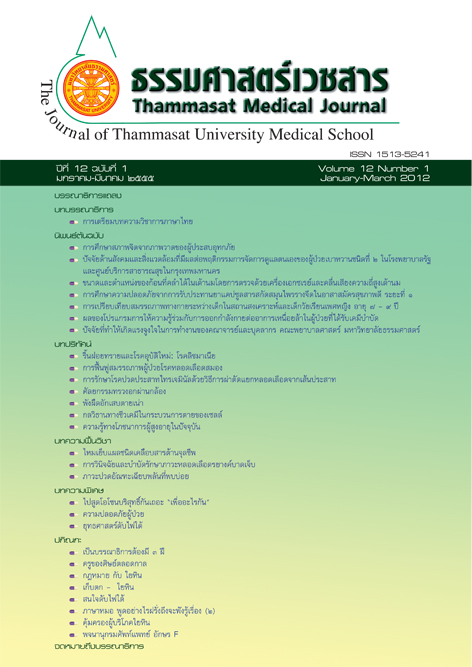Biochemical mechanism in Programmed Cell Death: An Overview
Keywords:
Programmed cell death (PCD), apoptosis, apoptosis-like PCD, paraptosis, caspase dependent pathway, caspase independent pathwayAbstract
Programmed cell death (PCD) is the cellular process in response with any cellular dangerous stimulus. It can be divided into several types depend on ultra-structural changes detected by electron transmission microscope and biochemical pathway involving in the processes. In conclusion, two main pathways relying on an initiating point has been proposed, i.e. intrinsic and extrinsic pathway. Intrinsic pathway is initiated by the mitochondrial permeabilization resulting in cytochrome c releasing out which then activated the caspase-9. While an extrinsic pathway is started off after cell surface death receptor bound with the death signal for example Fas ligand. This event finally triggers the activation of caspase-8 or caspase-10. In addition, PCD can be divided into another two pathway according to an involvement of enzyme caspase i.e. caspase dependent or apoptosis-PCD and caspase independent- including autophagy and apoptosis-like or Paraptosis-PCD. Cells will, however, be turned to be death via which pathway depend on the type of stimuli and its cascade reaction. Actually, it does not rely on only one mechanism but depend on multi-mechanism instead. Naturally, the death cells will then be removed by those of the phagocytic cells in the body. On the other hand, if the apoptosis mechanism in any cell has been dismissed, it will lead that cell having its own talent to be still grown without dying till reaching an immortal situation i.e. finally being to be cancer.
Key words: Programmed cell death (PCD), apoptosis, apoptosis-like PCD, paraptosis, caspase dependent pathway, caspase independent pathway



